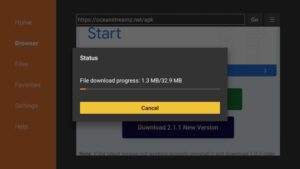In the dynamic world of online content creation, where video and audio reign supreme, platforms constantly evolve to cater to the diverse needs of creators and consumers alike. One such evolution is the emergence of YouTube to WAV converters, unlocking new possibilities for enthusiasts and professionals in the realm of audio content. In this article, we will delve into the significance of YouTube yo WAV conversions, exploring the benefits, applications, and potential impact on the audio landscape.
Table of Contents
ToggleUnderstanding YouTube to WAV Conversion:
YouTube, the behemoth of online video streaming, has become a treasure trove of diverse content, including music, podcasts, interviews, and more. However, for individuals who want to extract the audio from YouTube videos in its purest form, the WAV (Waveform Audio File Format) conversion provides a solution. Unlike compressed formats like MP3, WAV files preserve the original quality, making them ideal for those who seek high-fidelity audio experiences.
Benefits of YouTube to WAV Conversion:
- Uncompromised Audio Quality: WAV files are known for their uncompressed nature, preserving the full spectrum of audio data. When converting YouTube videos to WAV, users ensure that they retain the original audio quality without any loss due to compression.
- Professional Editing and Mixing: For musicians, producers, and audio engineers, YouTube to WAV conversion is a game-changer. WAV files provide a blank canvas for professionals to edit, mix, and master audio tracks without the artifacts associated with compressed formats.
- Archiving and Preservation: Content creators often face challenges when trying to archive or preserve their work. WAV files serve as an excellent archival format, ensuring that the audio content remains intact over time. This is crucial for artists who want to safeguard their creations for future generations.
- Seamless Integration with Digital Audio Workstations (DAWs): Musicians and producers using DAWs for music production find WAV files highly compatible. YouTube to WAV conversion allows them to seamlessly integrate audio from YouTube into their digital workflows for creative endeavors.
Applications of YouTube to WAV Conversion:
- Music Sampling and Remixing: Artists and producers often explore YouTube to discover new sounds or samples. Converting these audio snippets to WAV format provides a clean canvas for sampling and remixing, fostering creativity in the music production process.
- Podcast Production: Podcasters, aiming for professional-grade audio, can benefit from YouTube to WAV conversion. Extracting podcast interviews or audio segments in WAV format ensures superior sound quality, contributing to a more polished final product.
- Educational Content Creation: Educators creating instructional content on YouTube can enhance the auditory experience for learners by converting their videos to WAV. This is particularly advantageous for subjects that heavily rely on clear and accurate audio representation.
- Sound Design for Videos: Video creators who emphasize immersive audio experiences in their content can use YouTube to WAV conversion for precise sound design. This is crucial in genres like film, gaming, and virtual reality, where audio plays a pivotal role in creating a captivating atmosphere.
Potential Impact on the Audio Landscape:
The integration of YouTube to WAV conversion tools into the audio landscape has the potential to redefine how content creators approach and deliver audio experiences. Here are some ways this technological advancement might impact the industry:
- Quality Standardization: As more creators adopt WAV files for their audio content, there might be a shift towards a higher quality standard in the industry. This could lead to an increased appreciation for premium audio experiences across various platforms.
- Innovation in Music Production: Musicians and producers may find new avenues for innovation in music production, thanks to the ability to extract high-quality audio from YouTube. This could lead to the emergence of unique genres, styles, and sonic landscapes.
- Enhanced Learning Experiences: In the realm of online education, the use of WAV files can contribute to enhanced learning experiences. Subjects that rely heavily on auditory cues, such as language learning or music instruction, could benefit significantly.
- Accessibility in Podcasting: The podcasting landscape may witness a surge in accessibility and professionalism. Podcasters can deliver content with pristine audio quality, setting a new standard for the medium and attracting a broader audience.
Conclusion:
YouTube to WAV conversion represents a sonic revolution, empowering creators to unlock the full potential of their audio content. Whether you’re a musician, podcaster, educator, or content creator, the ability to extract high-fidelity audio from YouTube opens doors to new creative possibilities. As this technology continues to gain traction, we can anticipate a positive impact on the overall quality and innovation within the audio landscape. Embrace the wave, and let the sound revolution begin.








